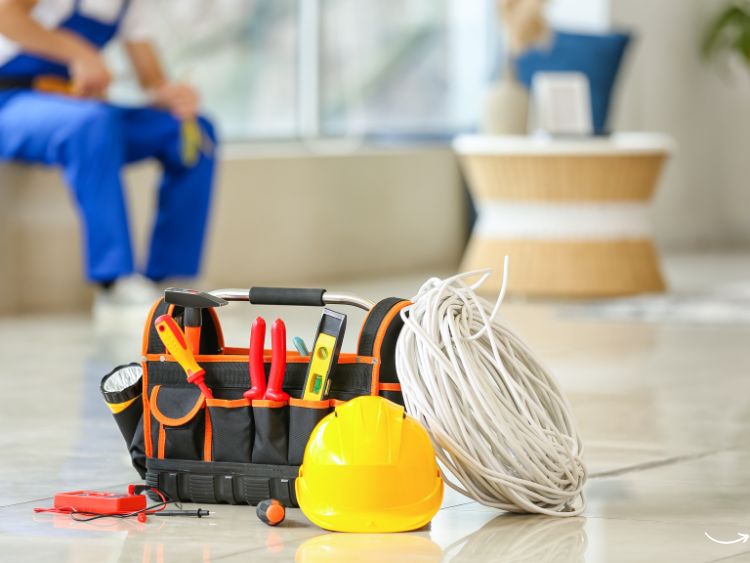Ever walked into a room and noticed the floor looks like it’s seen better days? Epoxy floors, known for their durability and aesthetic appeal, can sometimes need a little TLC. Whether you’re dealing with cracks, chips, or wear and tear, understanding epoxy floor repair can save you time and money. But where do you start? This guide will walk you through everything you need to know about repairing your epoxy floor, ensuring it looks as good as new. Let’s dive in!
What Is Epoxy Flooring?
Epoxy flooring is a surface that results from a combination of resin and hardener. This duo forms a robust, plastic-like material that’s both resilient and visually appealing. You’ll often find epoxy floors in garages, basements, and commercial spaces due to their durability and sleek appearance. But like anything else, they can suffer from damage over time.
Common Problems with Epoxy Floors
Epoxy floors are tough, but they’re not invincible. Here are some common issues you might encounter:
- Cracks: Often caused by the settling of the underlying concrete or heavy impacts.
- Chips: Usually result from dropping heavy objects or dragging sharp items across the floor.
- Peeling: This can occur if the epoxy wasn’t applied correctly, or due to moisture issues.
- Stains and Discoloration: Chemical spills or UV exposure can cause your once-shiny floor to look dingy.
Why Repair Your Epoxy Floor?
You might wonder, “Why bother with epoxy floor repair?” Well, maintaining your floor isn’t just about aesthetics. Here are a few reasons why you should consider repairs:
- Safety: Cracks and chips can be tripping hazards.
- Longevity: Proper maintenance extends the life of your floor.
- Value: If you’re looking to sell or rent your property, a well-maintained floor can boost its value.
Tools and Materials You’ll Need
Before you jump into epoxy floor repair, gather the necessary tools and materials:
- Epoxy resin and hardener
- Crack filler or epoxy patch kit
- Concrete grinder or sander
- Wire brush
- Safety gear (gloves, goggles, mask)
- Paint roller and brush
- Clean cloths and mop
Step-by-Step Guide to Epoxy Floor Repair
1. Assess the Damage
First things first, take a good look at your floor. Identify all the areas that need attention, whether it’s cracks, chips, or peeling sections.
2. Clean the Area
Thoroughly clean the damaged areas. Use a wire brush to remove any loose debris and a mop to clear away dust. For stains, a degreaser or specific cleaner may be necessary.
3. Sand or Grind the Surface
For peeling or rough sections, use a concrete grinder or sander to smooth out the area. This ensures the new epoxy adheres properly.
4. Fill Cracks and Chips
Using a crack filler or epoxy patch kit, fill in any cracks and chips. Follow the manufacturer’s instructions for the best results. Allow it to cure as recommended.
5. Mix and Apply the Epoxy
Mix the epoxy resin and hardener as per the instructions. Apply the mixture with a paint roller or brush, ensuring an even coat. For best results, work in small sections and avoid creating air bubbles.
6. Allow to Cure
Let the epoxy cure completely. This could take anywhere from 24 to 72 hours depending on the product used. Make sure the area is well-ventilated and free from dust during this time.
Maintenance Tips for Epoxy Floors
To keep your floor in tip-top shape, follow these maintenance tips:
- Regular Cleaning: Sweep and mop regularly to prevent dust and dirt buildup.
- Avoid Harsh Chemicals: Use mild cleaners to avoid damaging the epoxy.
- Use Mats: Place mats in high-traffic areas to reduce wear and tear.
- Address Spills Immediately: Clean up spills quickly to prevent staining.
FAQs About Epoxy Floor Repair
Q: How long does an epoxy floor last? A: With proper maintenance, an epoxy floor can last 10 to 20 years.
Q: Can I repair the epoxy floor myself? A: Yes, with the right tools and materials, DIY epoxy floor repair is possible.
Q: How do I prevent epoxy floor damage? A: Regular cleaning, avoiding harsh chemicals, and using mats in high-traffic areas can help prevent damage.
Q: Is epoxy flooring suitable for outdoor use? A: Epoxy floors are generally used indoors, but there are outdoor-specific epoxies available.
Q: How much does epoxy floor repair cost? A: Costs vary based on the extent of the damage and whether you hire a professional. DIY repairs can be quite affordable.
Conclusion
Epoxy floors are a fantastic choice for many spaces, offering durability and a sleek finish. However, like any flooring, they require maintenance and occasional repair. By following the steps outlined in this guide, you can ensure your epoxy floor stays in great condition for years to come. Remember, a little effort now can save you a lot of hassle and expense in the future. So, roll up those sleeves and get started on your epoxy floor repair today!
Authoritative Links Related to Epoxy Floor Repair
- https://www.familyhandyman.com/project/how-to-apply-epoxy-floor-coating
- https://www.bobvila.com/articles/how-to-apply-epoxy-floor-coating
- https://www.thisoldhouse.com/flooring/21019412/how-to-apply-garage-floor-epoxy
- https://www.diynetwork.com/how-to/rooms-and-spaces/floors/how-to-paint-and-epoxy-coat-a-basement-floor



